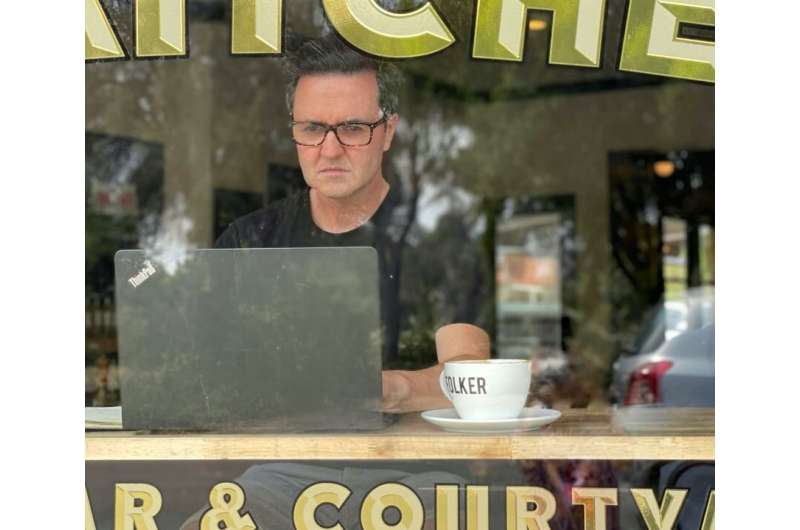Working in a cafe is becoming increasingly popular. Credit: Daisy Hopkins
Working from cafés and pubs has been commonplace amongst freelancers for years. But with hybrid working becoming the new "normal," its set to become a 2023-defining trend.
New research from Swinburne University of Technology, partnering with Third-Place.org, has investigated the appeal of working from cafés and other alternative locations, what they are used for and how workers behave there.
Recent research from OpenTable has revealed that almost half of remote workers now spend time each week working from cafés or other third places. The trend is particularly popular with Gen Z workers, 10% of whom say third places are now their preferred place to work.
Swinburne research shows that when it comes to third place work venues, cafés were the clear favorite—but participants mentioned they sometimes also use other third places, such as libraries, pubs, parks and coworking spaces.
On average, the researchers found that people who work in third places will typically do so between 2–3 times each week. They will stay anywhere between 15 minutes and 4 hours and spend between AU$4 and AU$30 each visit. Most of the time, they'll go to a third place on their own. When they use a third location for small meetings, the size of the gathering rarely exceeds 2 or 3 people.
The most common work tasks completed outside of the home and office are deep individual work, creative thinking/work, reading, admin tasks, paperwork, emails, small meetings and informal phone calls.
"We identified a range of different third place users," says lead researcher and Swinburne Innovation Fellow, Associate Professor John Hopkins. "'Device Disconnectors' like to visit third places for a quick break away from technology, 'Caffeine Creatives' use the change of environment as a mental reset to help them think creatively, 'Suburban Socialites' like to counteract the threat of loneliness when working-from-home with short regular visits to their local third place, and 'Lunchtime Liaisons' use third places for regular meetings with clients or colleagues, often combining this with lunch or breakfast."
There are many factors that attract workers to a third place venue—including good coffee, cost, nice music, privacy and outdoor space—but by far the most popular responses were:
- feeling welcome
- reviews
- wi-fi and power sockets
Overwhelmingly, "laptop workers" want a nice, friendly atmosphere—that isn't too crowded, noisy or have staff pressuring them to leave after a certain amount of time.
"Venues looking to attract these types of workers might have signage welcoming people to work within, provide a dedicated working space, advertise the wi-fi password or offer special bundles, such as a two-hour package including unlimited coffee and a sandwich," adds Hopkins.
Sandwiches are a good bet. The research found that workers opt for snacks and light meals, with more than half of third places workers saying they'd only ever buy something they could "eat with one hand"—with sandwiches, pastries, cookies and muffins being the most popular choices.
The top three benefits to working in a third place were seen to be mental reset, community and social connection, and great food and coffee. When asked to what extent working from a third place positively contributes to their overall well-being, the average response was 86%.
The chance of continuing to use a third place for work in the future was 98%. However, it was found that not all work tasks are suitable for third places. Workers said they strongly avoid these environments when working on something of a confidential nature (or with security or privacy risks), for longer or larger meetings, and when doing tasks that require a bigger screen or other specialist equipment.
Provided by Swinburne University of Technology
























